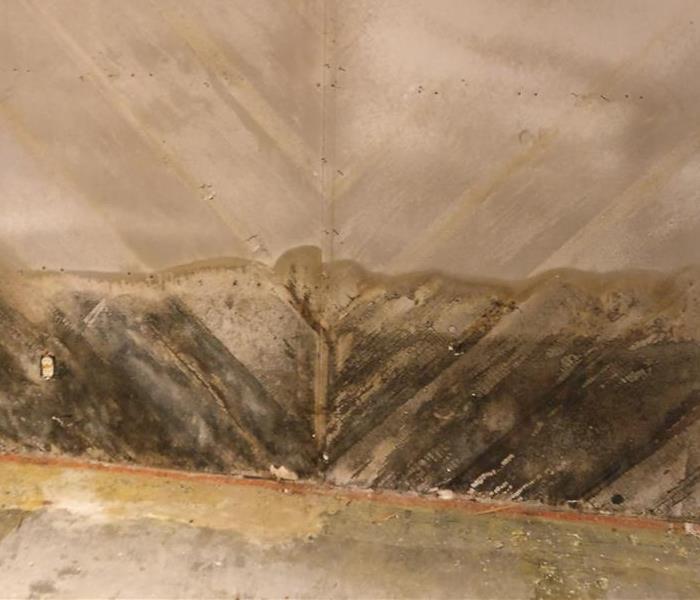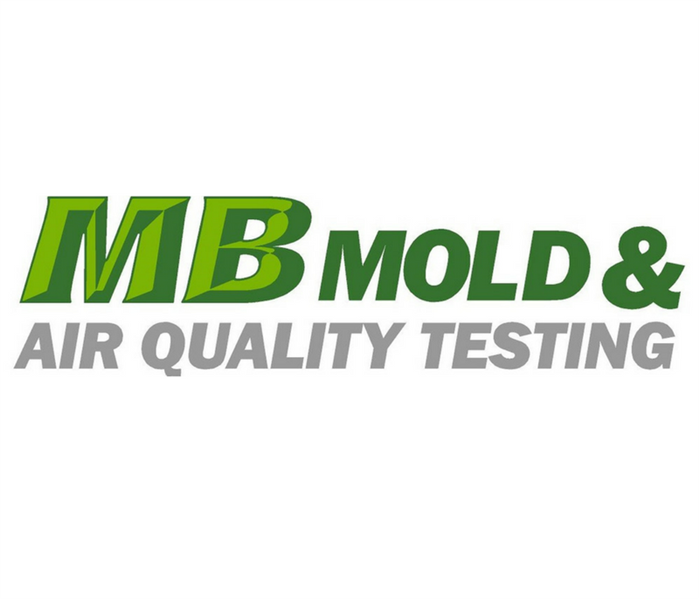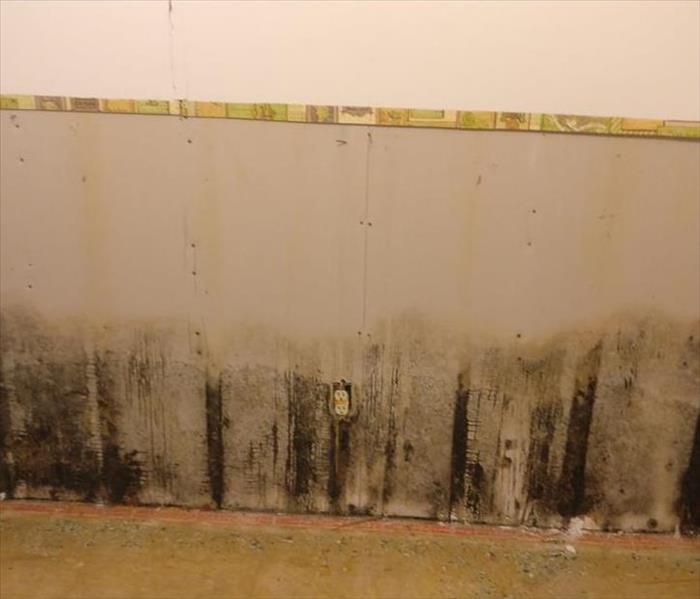Recent Mold Remediation Posts
Different Mold Types Part 1
7/27/2018 (Permalink)
 Mold can come in any shape and color. Check out these mold samples.
Mold can come in any shape and color. Check out these mold samples.
2 Classifications of Harmful Molds:
- Allergenic: Molds that cause allergies and allergic reactions like asthma attacks.
- Toxigenic: Molds that produce toxic substances that can lead to dangerous conditions.
Different types of mold:
1. Acremonium: A toxigenic mold type that changes in its appearance over time, and it typically grows in humidifiers, cooling coils, drain pans, and window sealants.
2. Alternaria: The most common allergenic mold type in the world, and it typically grows wherever dampness occurs (showers, bathtubs, and below leaking sinks). It is very quick to spread.
3. Aspergillus: This allergenic mold type has the potential to become toxic, and it is commonly found in American households. There are over 1,885 species appearing in many different colors.
Source: https://aerindustries.com/
More mold types to come in another blog post.
Different Mold Types Part 2
7/27/2018 (Permalink)
 If you find mold in your home, call SERVPRO of Black Hawk County at (319) 268-1521
If you find mold in your home, call SERVPRO of Black Hawk County at (319) 268-1521
4. Aureobasidium: An allergenic mold type that can sometimes be found growing behind wallpaper or on painted or wooden surfaces.
5. Chaetomium: A mold commonly found in water-damaged homes and buildings. It has a cotton-like texture and usually changes colors over time.
6. Cladosporium: An allergenic mold type that can grow in both warm and cold conditions. It often is found thriving in indoor materials such as fabrics, upholsteries, and carpets.
7. Fusarium: An allergenic AND toxigenic mold type that grows in homes with water damage. It is capable of growing and spreading at cold temperatures.
8. Mucor: An allergenic form of mold that usually grows in thick patches and grows near air conditioning, HVAC systems, and ducting due to moisture from condensation.
9.Penicillin: An allergenic form of mold that is easily recognizable by its blue or green colored surface with a velvety texture, and it is often found in water damaged buildings.
Source: https://aerindustries.com/
MB Mold and Air Quality Testing
7/10/2018 (Permalink)
 SERVPRO of Black Hawk County really appreciates MB Mold and Air Quality Testing and would recommend them to anyone.
SERVPRO of Black Hawk County really appreciates MB Mold and Air Quality Testing and would recommend them to anyone.
SERVPRO of Black Hawk County really appreciates MB Mold and Air Quality Testing and would recommend them to anyone.
Introduction:
MB Mold and Air Quality Testing is a company out of Dubuque who helps our customers with various indoor air quality issues (IAQ). They serve the Eastern Iowa area—including Dubuque, Waterloo, and Cedar Falls—as well as Southwest Wisconsin and Northwest Illinois area.
How does air quality testing work?
When we have a customer, who has a potential mold problem, we call our friend Bob Vohl, CIE, of MB Mold and Air Quality Testing. Ideally, an Indoor Environmental Professional (IEP) from MB Mold, will take initial samples when there is a suspected mold issue.
In our case, Bob makes regular trips from Dubuque, IA to take air samples in the home or building that is suspected of mold and also samples the outside environment. Typically, an air sample contains enough air so the results capture an accurate picture of about 600 square feet of the indoor environment. He then sends the samples to a lab and receives the results within 48 hours.
The samples taken outside are just as important as the ones inside the home—if not more. They use the outdoor results as a comparison because mold spores are everywhere—both outside AND inside. Having mold spores in your home or building is completely normal, but if there are more mold spores inside than outside, it indicates there is a source of mold inside the building and there’s a problem.
Wrap it up.
Here’s where SERVPRO of Black Hawk County comes in. We rely on their expertise so we can apply our expertise of remediating the mold problem and returning your building to a state of normal fungal ecology (NFE). The whole remediation process is explained on our website. After the remediation, MB Mold and Air Quality Testing will perform Post Remediation Verification (PRV) testing to ensure that the home or building has returned to NFE. If the results come back with more mold spores outside than inside, then it’s case closed, and we can finish the wrap-up.
How does mold testing work?
Over the counter mold testing kits gives very little information. These test kits require a swab of the suspected material being inserted into a liquid and waiting for a color change. They simply tell you that mold is present, which is normally the case in every building. If you’re concerned a specific piece of furniture has mold on it, this method may be acceptable. However, if you want to know the type of mold, if it is actively growing and most importantly how much of the building has been contaminated with airborne mold spores, we recommend getting an IEP.
From the man himself:
We reached out to Bob and he shared,
“The IEPs from MB Mold and Air Quality Testing have undergone rigorous training and are certified by the ACAC as Council Certified Indoor Environmentalists (CIEs). They are extensively trained in several areas of IAQ in addition to mold, such as; allergen testing, methamphetamine residue, Volatile Organic Compounds (VOCs), avian-bat-rodent droppings and several other IAQ issues. MB Mold and Air Quality Testing works with residential and commercial customers and their buildings.”
SERVPRO of Black Hawk County really appreciates MB Mold and Air Quality Testing and would recommend them to anyone.
Does your insurance policy cover Mold?
6/1/2018 (Permalink)
 Do you know what's hiding behind your walls? If you've had water damage, there could be something more.
Do you know what's hiding behind your walls? If you've had water damage, there could be something more.
Does your insurance policy cover mold?
Mold removal can be extremely costly, so you don’t want to find out too late that you’re not covered!
What’s included in mold coverage?
Coverage varies from policy to policy and state to state, so the only way to know for sure if your policy will cover mold removal is to read your policy carefully. Or, if the long document intimidates you, you can just ask your agent. It’s good to let the experts explain the nitty gritty details, that way you don’t miss a beat when an event does occur.
When Mold Coverage Exists:
In cases where mold coverage exists, coverage needs to be triggered by another covered cause of loss such as:
- Burst pipe
- Flood
- Residual water from putting out a fire
Water Damage from a Leaky Roof
Homeowners insurance usually won’t pay for water damage that results from a leaky roof, and most policies won’t cover mold damage that results from a leaky roof, either. This is because it is within your responsibility to provide maintenance to your home. However, if damage to the roof is caused by a fallen tree or limb, that damage usually will be covered by homeowners’ insurance. In that case, your insurance policy might also cover any resulting mold damage.
Note: Ignoring the problem won’t make it go away
Most policies have a requirement that you take reasonable steps to mitigate damage. Once you are aware of a water loss you have a duty to address the condition to protect from further damage. If you are aware of otherwise covered water damage and fail to take any action, there could be coverage issue for the water damage as well as any resulting mold damage.
We hope you don’t need our services, but if you find mold in your home, call SERVPRO of Black Hawk County at (319) 268-1521. We’ll arrange mold testing with MB Mold and Air Quality Testing in Dubuque, a trusted firm we utilize.
Black Hawk County Residents: Follow These Mold Safety Tips If You Suspect Mold
6/13/2017 (Permalink)
 Without proper training, you could be spreading mold throughout your home. SERVPRO using protective suit, mask and equipment to remove mold.
Without proper training, you could be spreading mold throughout your home. SERVPRO using protective suit, mask and equipment to remove mold.
If you see visible mold, do not disturb it. You can inadvertently spread the mold infestation throughout your home. When mold is disturbed, the mold can release microscopic mold spores which become airborne and can circulate inside your home.
What to Do:
- Stay out of affected areas.
- Turn off the HVAC system and fans.
- Contact SERVPRO of Black Hawk County for mold remediation services.
What Not to Do:
- Don’t touch or disturb the mold.
- Don’t blow air across any surfaces with visible or suspected mold growth.
- Don’t attempt to dry the area yourself.
- Don’t spray bleach or other disinfectants on the mold.
SERVPRO of Black Hawk County specializes in mold cleanup and restoration. Our crews are highly trained restoration professionals that use specialized equipment and techniques to properly remediate your mold problem quickly and safely.
If You See Signs of Mold, Call Us Today – SERVPRO of Black Hawk County 319-268-1521.





 24/7 Emergency Service
24/7 Emergency Service




